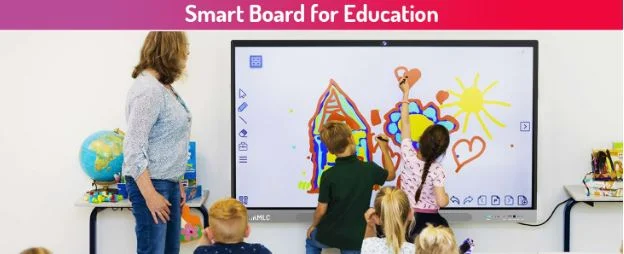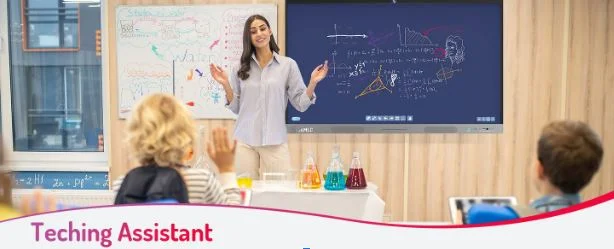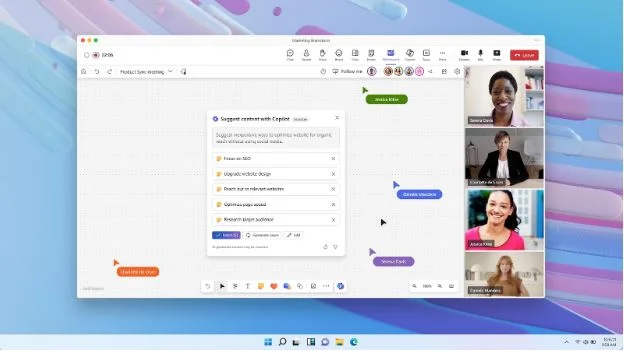Teaching methods are evolving, and educators are increasingly turning to digital tools to enhance student engagement and improve learning outcomes.
Whiteboard apps, which replicate the classic whiteboard experience, offer the added power and flexibility of digital features, making them an essential part of modern classrooms, whether physical or virtual. These apps allow teachers to interact with students in dynamic new ways, fostering a more engaging and effective learning environment.
Why Are Whiteboard Apps Important for Teachers?
Before diving into recommendations, it’s worth understanding why whiteboard apps have become vital teaching aids.
1. Interactive Learning
Whiteboard apps allow teachers to write, draw, highlight, and erase in real-time, mimicking traditional classroom interactions. They often include multimedia support, enabling educators to incorporate images, videos, and links to enhance lessons.
2. Remote and Hybrid Teaching
The COVID-19 pandemic accelerated the shift toward online and hybrid learning. Whiteboard apps provide a virtual space where teachers and students can collaborate synchronously, bridging the gap created by physical distance.
3. Flexibility and Accessibility
Unlike physical whiteboards, digital whiteboards save your work automatically, making it easy to revisit past lessons or share notes with students. Many apps are cloud-based, allowing access from any device, anytime.
4. Enhanced Engagement
Students tend to be more engaged when lessons are visually dynamic. Whiteboard apps support features like multi-user collaboration, annotations, and interactive quizzes, which promote active participation.
What to Look for in a Whiteboard App for Teachers
When selecting a whiteboard app, teachers should consider several factors to ensure the tool meets their specific teaching needs.
Ease of Use
The interface should be intuitive and straightforward. Teachers often juggle multiple tasks, so spending time learning complex software is not ideal. Simple navigation and familiar tools like pens, erasers, and color palettes are essential.
Collaboration Features
Look for apps that allow multiple users to write and interact simultaneously. This feature is especially important for group activities, peer reviews, or student presentations.
Multimedia Integration
Good whiteboard apps support the inclusion of images, PDFs, videos, and even links. The ability to import and manipulate content broadens teaching possibilities.
Compatibility and Accessibility
Ensure the app works across devices and operating systems — whether you use a tablet, laptop, or desktop. Apps that sync across devices and platforms offer maximum flexibility.
Saving and Sharing Capabilities
Teachers should be able to save whiteboard sessions, export notes as PDFs or images, and share them easily with students or colleagues.
Cost
While some apps offer robust free versions, premium plans often provide enhanced features. Choose a solution that fits your budget without compromising essential functions.
Top Whiteboard Apps for Teachers in 2025
Here are some of the most popular and effective whiteboard apps teachers are using today, each with unique strengths.
1. Microsoft Whiteboard
Microsoft Whiteboard is a versatile and powerful tool, especially suited for educators already using Microsoft 365. It integrates seamlessly with Teams, making it perfect for online classrooms.
Key Features:
- Infinite canvas for brainstorming and teaching.
- Real-time collaboration for students and teachers.
- Easy integration with Microsoft Office tools.
- Sticky notes, text boxes, and templates for lesson planning.
- Accessible on Windows, iOS, and web browsers.
Microsoft Whiteboard is free, making it accessible for schools and individual teachers alike. Its deep integration with the Microsoft ecosystem makes it a top choice for many.
2. Jamboard by Google
Jamboard is Google’s digital whiteboard app designed for collaboration. It works well within the Google Workspace environment, widely used in education.
Key Features:
- Interactive drawing and writing tools.
- Supports importing images, documents, and PDFs.
- Collaboration with up to 50 participants.
- Integration with Google Meet and Drive.
- Web and app versions for Chrome OS, Android, and iOS.
Jamboard is free and easy to use, especially for teachers already leveraging Google tools like Google Classroom.
3. Explain Everything
Explain Everything is a robust interactive whiteboard app ideal for teachers who want more than just drawing capabilities.
Key Features:
- Interactive screencasting and recording features.
- Collaborative whiteboard with live video chat.
- Ability to import PDFs, images, and videos.
- Annotation and drawing tools with multiple pen options.
- Supports cloud storage and sharing.
It is popular for flipped classrooms and online lessons, where teachers can create engaging recorded tutorials.
4. Miro
Miro is a professional collaboration platform with a powerful whiteboard feature that’s gaining popularity in education.
Key Features:
- Infinite canvas and templates designed for education.
- Multi-user collaboration in real-time.
- Integration with Zoom, Slack, Google Drive, and more.
- Export options in multiple formats.
- Works on web browsers, desktops, and mobile devices.
Miro’s flexibility makes it suitable for diverse teaching styles and subjects.

Enhancing Digital Teaching with Interactive Whiteboards
While apps are crucial, pairing them with interactive hardware like the HKMLC Interactive whiteboard creates an immersive teaching environment. The HKMLC Smart whiteboard combines the flexibility of digital apps with the tactile experience of traditional whiteboards.
Benefits Include:
- Touchscreen capability that works with fingers and styluses.
- Compatibility with major whiteboard apps for seamless integration.
- Large screen size for better visibility in classrooms.
- Advanced software features like handwriting recognition and multi-user interaction.
Tips for Choosing the Right Whiteboard App for Your Teaching Style
Identify Your Teaching Needs
Are you teaching younger students who need visual and interactive lessons, or older students who require detailed explanations and multimedia? The app’s features should align with your curriculum and pedagogy.
Try Free Versions First
Most whiteboard apps offer free trials or basic plans. Experiment with a few to determine which interface feels most natural and meets your needs.
Consider Your Tech Setup
Check device compatibility and whether your school’s IT infrastructure supports the app. Also, consider the internet speed, especially if you rely on real-time collaboration.
Look for Community Support
Apps with active user communities, tutorials, and customer support can ease the learning curve and help you troubleshoot issues quickly.
Prioritize Security and Privacy
Especially in education, make sure the app complies with data protection laws and offers secure sharing options.
Common Features That Make a Whiteboard App Teacher-Friendly
Annotation Tools
Being able to highlight, underline, or circle important content helps emphasize key points during lessons.
Multiple Pen Options
Different colors, thicknesses, and styles of pens enhance the clarity and creativity of explanations.
Shapes and Text Boxes
Adding geometric shapes and typed text helps in structuring notes and diagrams.
Eraser and Undo Functions
Mistakes happen, so easy correction options save time and reduce frustration.
Screen Recording
Some apps allow recording your whiteboard sessions for students to review later, an invaluable feature for flipped classrooms and homework help.
Integration With Other Tools
Apps that integrate with platforms like Google Classroom, Microsoft Teams, or Zoom streamline your workflow and improve accessibility for students.

The Future of Teaching with Whiteboard Apps and Smart Technology
The landscape of education technology is constantly evolving. The future points toward more sophisticated interactive tools that combine hardware and software seamlessly. Products like the HKMLC Digital whiteboard exemplify this evolution by integrating digital whiteboard apps directly into physical, interactive surfaces.
Artificial intelligence (AI) and augmented reality (AR) are also being integrated into whiteboard software, promising to make lessons even more engaging and personalized.
Final Thoughts
Choosing the right whiteboard app for teachers depends on your unique teaching style, technical setup, and the needs of your students. Whether you prefer the simplicity of Jamboard, the robust features of Explain Everything, or the professional collaboration environment of Miro, there is a whiteboard app designed to enhance your classroom experience.
Pairing your app of choice with interactive hardware like the HKMLC Smart whiteboard takes teaching to a whole new level, combining digital innovation with practical usability.
As classrooms become more hybrid and tech-driven, mastering a whiteboard app will empower you to deliver dynamic, interactive lessons that resonate with students and adapt to the demands of modern education.









